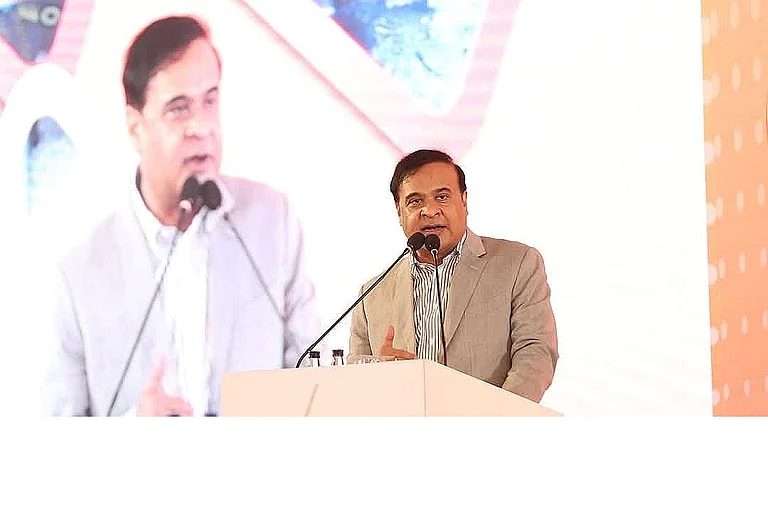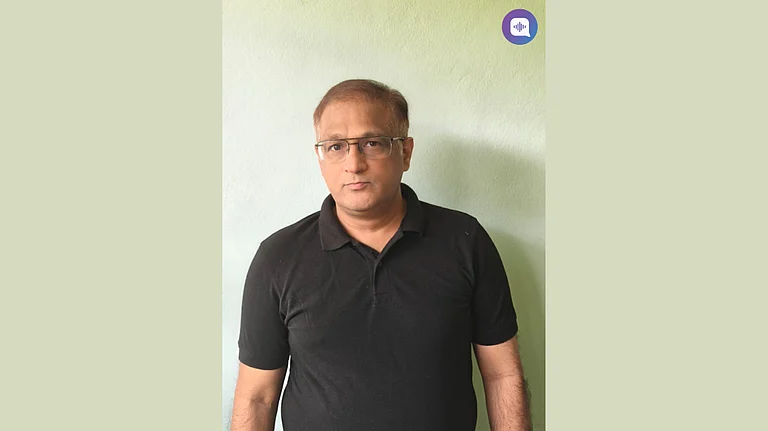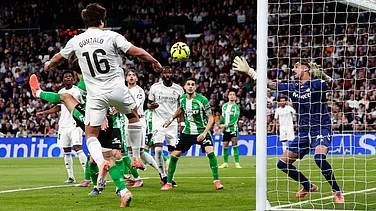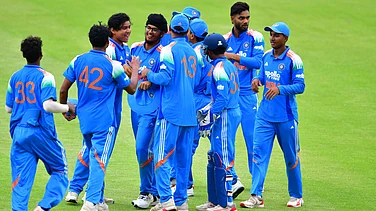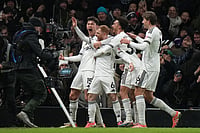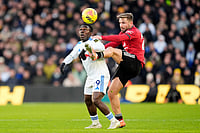One unforgettable day in 1975, I made my way from my home in the suburb of Khar, Bombay, to the Girgaum Chess Circle at Chikitsak High School. I was just about 16 and had embarked on a career in chess. That day, I was in a state of high excitement, as I was about to see a grandmaster in person for the first time. The champion in question was Yuri Averbakh, who was visiting India as part of the Indo-Soviet chess programme.
On May 7 this year, Averbach died at the grand old age of 100. But back in 1975, he was still in his prime. His clarity of mind was impressive. Averbakh was renowned for his endgame knowledge. In Girgaum, amidst the area’s chawls and working-class hum, he educated us on endgame tactics and many other aspects of the game.
It was my first brush with the world’s foremost chess culture hub, the Union of Soviet Socialist Republics (USSR). My fascination with chess in the USSR was not only due to its prowess in the game but also because chess had been one of the vehicles for their Cold War competition with the United States (US). The race played out in different fields, such as space exploration and sports, to name just two. There was a fair amount of jingoism, subtle or overt, in and around the board battles between the USSR and the US.
In fact, that was also the case when Indian chess players played Pakistan and Bangladesh. But we will come to that later.
A little bit of history
Let us go back a bit in history and look at the graph of different regions in chess.
The game changed its form for several centuries, till its modern rules were laid down in Europe around 500 years ago. In the 16th and 17th centuries, Italy and Spain dominated the sport. Then, in the 18th century, France became the strongest chess nation.
Around that time, Benjamin Franklin, the versatile intellectual and one of the founding fathers of the US, learnt chess in Paris and England. He picked a lot of his skills through his acquaintance with François-André Danican Philidor, the French composer and chess player.

In 1733, Franklin established chess in the US. His book Morals of Chess, published in 1779, is available even today. Thousands of miles away in the USSR, too, chess was catching on. However, the first known chess book in Russia, Praviladlia ShashechnoiIgry (Rules for the Game of Chess), published in 1791, is nothing but an exact translation of Franklin’s book, suggesting a world-wide connection between the chess fraternity, despite the difficulties of those times in travel and communication.
But chess truly flourished in the USSR in the later part of the 19th century, mainly due to the patronage of the Tsar and even more so under the Communist regime in the 20th century.
The road to Fischer–Spassky clash
World War I and the Russian Revolution completely changed the international chess scenario. Germany and the US slipped, while the USSR started producing champions by the dozen.
Then, World War II led to the Cold War between western countries (led by the US) and Eastern European countries (led by the erstwhile USSR). They started competing with each other in every field. Both the US and the USSR were the pioneers in atomic and space missions. They dominated the Olympic Games too.
In chess, however, there was no real comparison between the two. The USSR won all world championships between 1946 and 1969, for example, a staggering display of dominance. The USSR’s chess school was considered invincible.
The arrival of one man, a genius with an IQ of over 180, changed that. His name was Bobby Fischer. Born in 1943 in Chicago to a single mother, Fischer discovered chess when he was six after his older sister Joan bought a board at a candy store. He became consumed by it and played for several hours every day.
By 14, Fischer was a US national champion. At some point, the young prodigy from the West had to collide with the sport’s rulers, the Russians. Initially, Fischer suffered setbacks against them. So, he learnt Russian to be able to read Russian chess literature and acquire their techniques. The tide turned. Fischer scored some wins against USSR players. And the US finally saw their chance of beating the USSR at its own game.
Everything then led to the dramatic ‘Match of the Century’, the 1972 World Championship between Fischer, 29, and the USSR’s Boris Spassky, 35, on neutral ground in Reykjavik, Iceland.
The defending champion had held the upper hand against Fischer till their 1972 confrontation. Apparently, Fischer was unable to hold his own against Spassky’s attacking style. When Fischer started making ridiculous demands for the World Championship, such as an increase in prize money from $2000 to $250,000, even the US had doubts if Fischer really wanted to face Spassky. Interestingly, Jim Slater, a British multi-millionaire, rose to the occasion and sponsored the match.
But once the nearly two-month, 24-game match began, Fischer was all in. Not just on the board but off it. He augmented his mental preparation with physical workouts, swimming late in the night and playing tennis during off days.
Still, it was Spassky who started strong. He won the first game and his challenger gave him a walkover in the second. However, it was soon revealed that losing these two games was a part of a well-planned strategy by Fischer, who finished the contest in just 21 games, with a thumping 12.5–8.5 victory.
The US had a hero
The match changed a lot of things, except Fischer himself, who chose to be the same—a chess lover and champion. The US press and political machinery milked the win, even though its architect turned down an invitation from President Richard Nixon to visit the White House. In fact, Fischer never played professionally again, becoming increasingly reclusive and eccentric.

For a few years after his triumph, though, Fischer was a darling of the American media and establishment, a mascot of the nation’s intelligence and resilience. At the height of his fame, Fischer was probably covered and feted more than all the USSR world champions combined. And the publicity definitely had a nationalistic slant.
The USSR press did not have much to celebrate in Reykjavik. However, overall, they remained the world’s most powerful chess nation, as they had many more great players in their ranks than the US. This, according to their press and publicity machinery, was a sign of their superiority over the western world, not just the US. The irony was that many USSR players wanted to settle in the US for a better life. And not many harboured a personal dislike of US players. Contrarily, US or western players held grudges against some USSR players.
I had the opportunity to play against Spassky and draw the game at the Lloyds Bank Open in London in 1984. Spassky was gracious, even though I held him to a draw. I did not have the audacity to ask him if he wanted to discuss the match. To my surprise, he himself proposed it. And we went on to analyse our game for nearly two hours.
I first visited the USSR in 1984, as part of the Indo-Soviet programme, and made several trips there subsequently. I maintain that my generation of players improved because of our association with the Soviet system.
India vs. Pak in chess
There was a bit of jingoism in our matches with Pakistan and Bangladesh, but all from the other side.
I remember the 1983 Asian Team Championship in Delhi. The Pakistan players were friendly, but on match days they would adopt a typical khadoos (stubborn) attitude.
We almost always defeated them. “So what? You had home advantage” would be their refrain.
It was all a bit obvious and amusing.
Also, the Bangladesh and Pakistan players, in general, would be very happy when the Indian teams lost to strong European contenders, something which we could not understand, since these players were otherwise quite friendly with us. When confronted directly, both Mahmood Lodhi of Pakistan and Niaz Murshed of Bangladesh replied in the same vein.
ALSO READ: An Enigma Called Imran Khan
The gist of what they said was, “Finishing ahead of India means a great achievement in our country, and since we can’t hope to beat your teams in direct encounters, we just hope that you lose to strong European teams, thereby giving us an opportunity to go ahead of you in points by defeating some weaker teams.”
The Indian players, on the other hand, were not too flustered by the schadenfreude. We knew we could beat our cross-border rivals easily, so whatever pressure there could have been in normal circumstances, in such situations it was considerably reduced.
(This appeared in the print edition as "Clash of Giants")
(Views expressed are personal)
Pravin Thipsay is a Grandmaster and Arjuna Awardee








